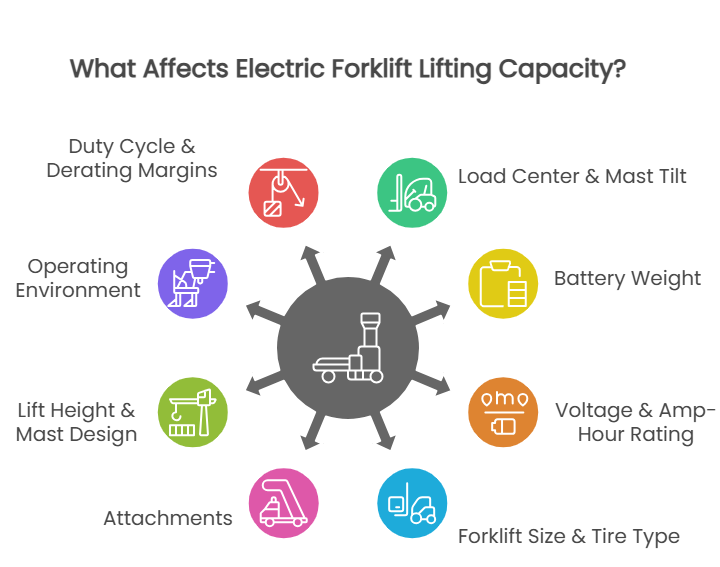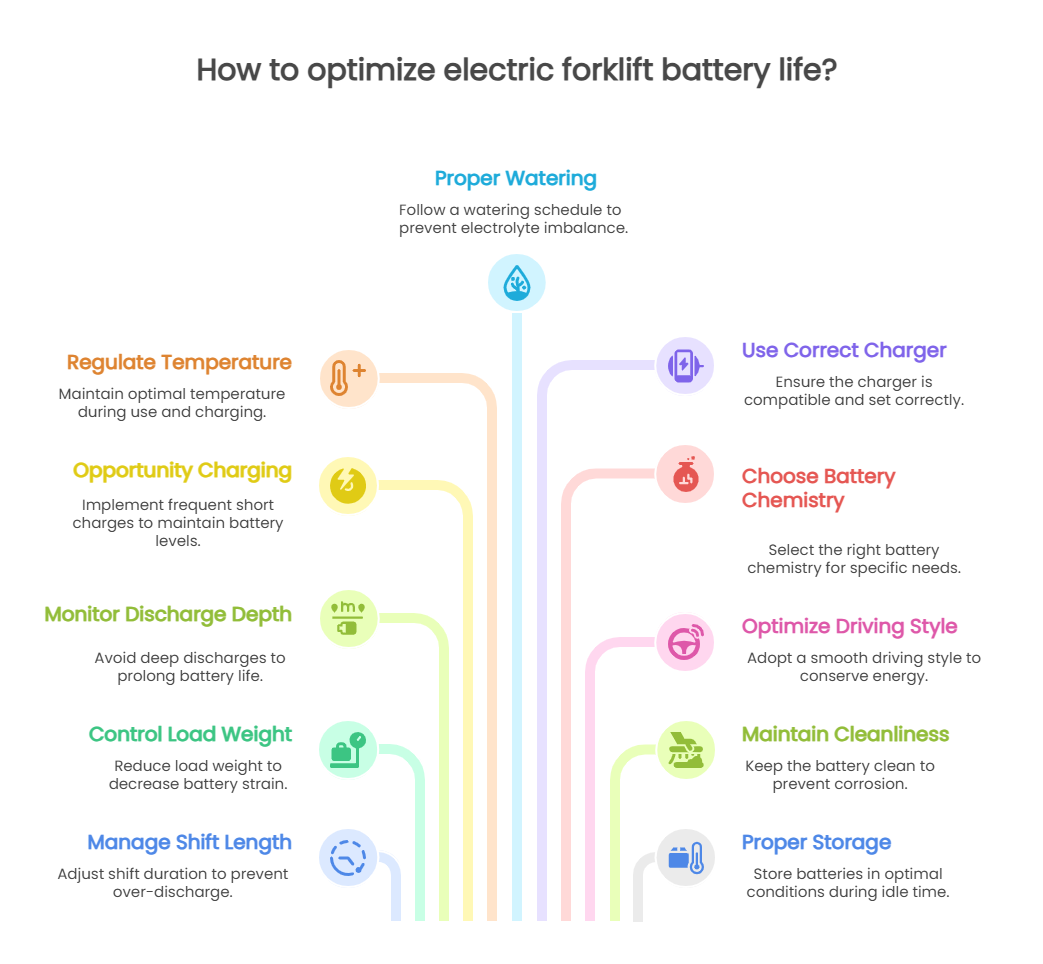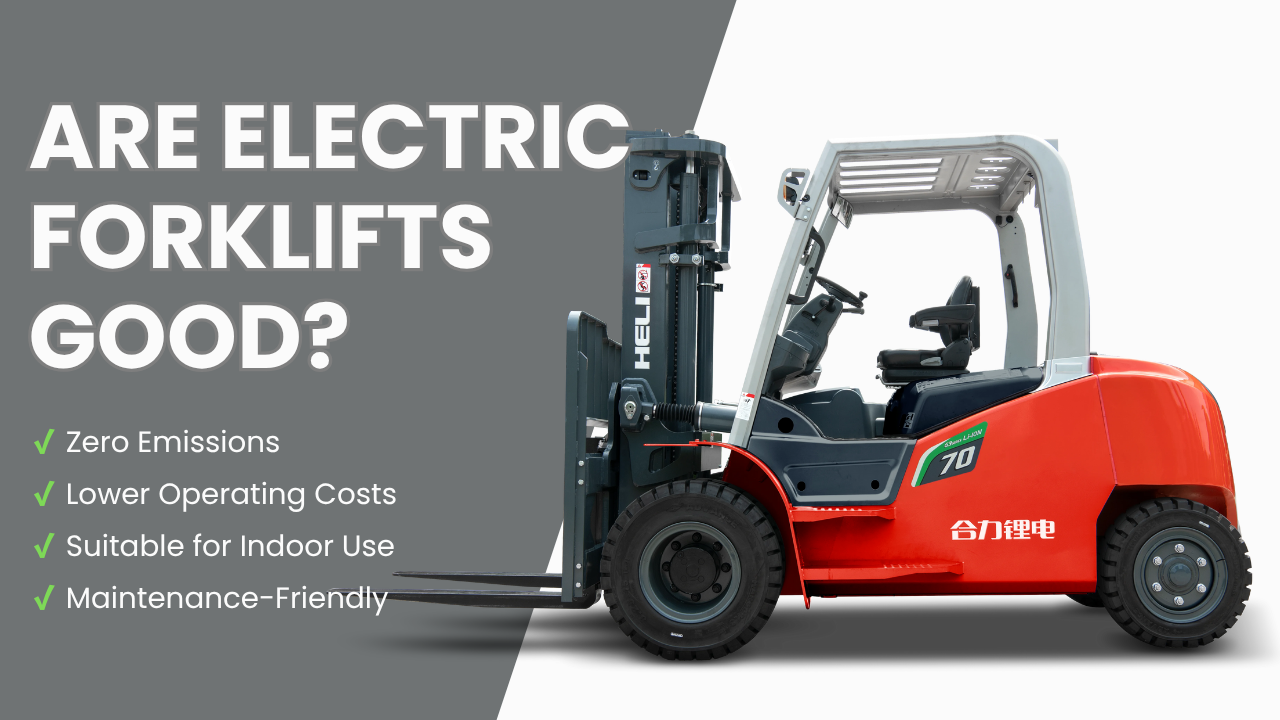Are Electric Forklifts Good? 7 Common Questions Answered
The global shift toward electric forklifts is picking up remarkable speed. In 2022, the electric forklift market was valued at USD 56.89 billion. By 2030, it’s projected to reach USD 152.30 billion, growing at a compound annual growth rate (CAGR) of 13.1% from 2023 to 2030[1].
What’s driving this growth? More warehouses now favor the electric forklift over diesel trucks because fast-charging lithium-ion batteries trim energy bills and idle time. Tougher emission rules and indoor air worries add momentum to the shift.
So, are electric forklifts good? Are they the right fit for every operation? This article will answer common questions and help readers learn the advantages and limitations of electric forklifts.
What Are Electric Forklifts? How Do They Work?
An electric forklift is a battery-powered lift truck that moves and raises loads. A large lead-acid or lithium-ion battery under the seat feeds current to a controller that manages an electric traction motor. That motor both drives the wheels and spins a hydraulic pump. The pump pressurizes fluid that pushes lift cylinders so the mast and forks rise, tilt, or lower a load.
When the operator eases off the accelerator, regenerative braking slows the electric forklift truck and returns a little charge to the battery. Instead of refueling, the electric forklift battery is recharged through a plug between shifts.
How Much Weight Can an Electric Forklift Lift?
Small walk-behind pallet trucks manage about 3,000 lb (≈1.36 t) loads. Similarly, mid-size warehouse units lift approximately 3,000-6,500 lb (≈1.36–2.95 t). Heavy-duty battery forklift trucks now top out near 40,000 lb (≈18.14 t). An electric forklift can therefore span a very broad capacity range.
Factors That Influence Lifting Capacity
- Load center & mast tilt.
- Battery weight (counterweight).
- Voltage and amp-hour rating.
- Forklift size, wheelbase, tire type.
- Attachments (clamps, sideshift).
- Lift height & mast design.
- Operating environment (indoor/outdoor).
- Required duty cycle and derating margins.

Are Electric Forklifts Suitable for Outdoor Use?
Yes. Electric forklifts can be used outdoors, especially in controlled environments. While they aren’t built for rugged terrain or extreme weather, they perform well in many common outdoor scenarios when conditions are right.
Here’s how they handle different outdoor factors:
- Paved surfaces and loading docks:
Smooth concrete or dock ramps pose no issue. Most electric forklifts handle these surfaces with ease.
- Weather exposure:
Light rain is acceptable for models with proper IP-rated enclosures. However, heavy rain or snow should be avoided to protect electrical components.
- Cold temperatures:
Sub-freezing weather can reduce battery efficiency and slow hydraulic response. Battery warmers and scheduled charging can help maintain performance.
- Uneven terrain:
Mud, loose gravel, or deep ruts reduce traction and increase the risk of tipping, as standard tires and low ground clearance are designed for flat indoor floors. However, specialized electric forklifts with pneumatic tires and higher clearance improve traction and stability outdoors.
How Long Do Electric Forklift Batteries Last?
On a full charge, most electric forklift batteries power a truck for a normal eight-hour shift (6-8 hours) before they need a recharge. With proper maintenance, lead-acid battery packs typically endure 1,500–2,000 charge cycles, providing 4–6 years of dependable daily use. By comparison, advanced lithium-ion packs can achieve 3,000–5,000 cycles, doubling the lifespan to 8–10 years of daily single-shift use. That can add up to around thousands of working hours before you notice a meaningful drop in capacity.

How Long Does Charging Take? What Are the Charging Options?
Lead-acid packs need about eight hours to reach full charge, and many crews add another eight for cooling. Lithium-ion units are quicker, topping up in one to two hours with the right charger. That gap shows how long an electric forklift can be out of action on a normal plug-in routine.
Fast chargers can push 40-50% of capacity back during breaks and get a pack to full in just a few hours while keeping an electric forklift available across shifts. Where downtime must be near zero, a battery-swap cart can drop one pack and fit another in five minutes or less.
Are Electric Forklifts More Cost-Effective than Gas-Powered Ones?
Yes. Despite a higher upfront cost, electric forklifts offer significant long-term savings.
Unlike gas-powered models, electric forklifts eliminate fuel expenses and require far less maintenance due to their simpler design and fewer moving parts. They also run more quietly, produce zero on-site emissions, and help avoid environmental compliance issues.
With lower operating costs, reduced downtime, and a longer service life, electric forklifts often prove more cost-effective over time.
What Maintenance is Required for Electric Forklifts?
For an electric forklift, operators should inspect charge level, tires, forks, cables, and safety devices at the beginning of each shift. Top up battery water and clean terminals once a week—or every 5-10 charge cycles—and grease the mast.
Once a month, check hydraulic fluid, chain wear, brake pads, and tighten wheel nuts. At the same time, at 500 hours (quarterly), technicians test motor brushes, load-test the battery, and run a complete safety audit.
An electric forklift needs no engine oil, spark plugs, fuel filters, or belt changes, so routine jobs are fewer than on gas or diesel trucks. The main imposition is battery care and replacement every 5-7 years, while combustion models simply refuel. That means fewer scheduled interruptions and lower annual service spend, though you must allow time and space for charging.
Conclusion
Are Electric Forklifts Good? Absolutely. They combine strong lifting capacity, reliable battery life, and flexible charging options with lower operating costs and minimal maintenance. Suitable for indoor use and outdoor conditions, they deliver clean, quiet performance without sacrificing power or productivity.
HELI, a global leader in material handling solutions with over 65 years of expertise, offers a full range of electric forklifts from 0.8 to 10 tons. Whether you prefer lead-acid or lithium-ion power, HELI delivers proven performance for every operational need. Contact us today to find the right solution for your fleet.
References
- Electric Forklift Market to Surpass USD 152.30 Billion by 2030 Driven by Government Initiatives Coupled with Technological Integration and Industry 4.0 | Report by SNS Insider. Available at: https://www.globenewswire.com/news-release/2024/01/29/2818943/0/en/Electric-Forklift-Market-to-Surpass-USD-152-30-Billion-by-2030-Driven-by-Government-Initiatives-Coupled-with-Technological-Integration-and-Industry-4-0-Report-by-SNS-Insider.html(Accessed on July 8, 2025)

